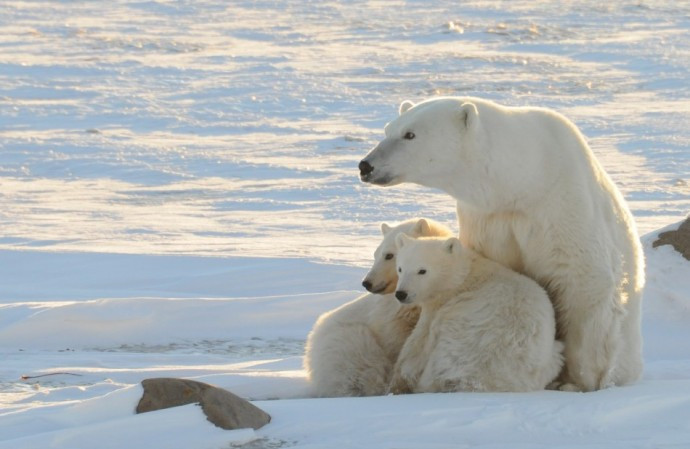Shrinking Arctic ice driving polar bears to extinction, says study

Polar bears will face starvation and reproductive failure leading to extinction due to heavy loss of Arctic ice, says a study.
Under a business-as-usual scenario, each polar bear population in Canada's Arctic region may undergo two to five months of ice-free conditions, spurring the decline of the predator's population.
The Alberta study, published in Plos One, used sea ice projections for the Canadian Arctic Archipelago from 2006-2100 and metrics developed from polar bear energetics modelling.
As noted by the World Wildlife Fund (WWF), which co-sponsored the study, the ice is the habitat where bears mate and raise their cubs. Sea ice is also an essential resting and breeding area for their primary food, ringed seals.
While the Canadian Arctic Archipelago, home to 20% of the world's polar bears, has sea ice throughout the year, that situation is rapidly changing.
The changing physical characteristics of marine ecosystems and loss of habitat affect polar bears in critical ways, concludes researcher Stephen Hamilton from University of Alberta and colleagues.
By 2070, more than 80% of the archipelago's ice could break up by July each year, forcing pregnant females to retreat to land prematurely, lacking sufficient fat reserves to support pregnancy and nursing.
The females and their offspring will starve into extinction, the study says.
Canada is home to approximately two-thirds of all polar bears worldwide. It is also among some of the nations that have refused to draft a national strategy to reduce emissions. The country's tar sands projects is expected to send emissions further soaring.
Pressure is expected to build on Canada at the ongoing annual United Nations Climate Change Conference (COP 20) in Lima, Peru.
Canada has insisted it would act on climate change when there was a commitment from "all major emitters" to curb greenhouse gas emissions. At the Copenhagen summit, Prime Minister Stephen Harper committed Canada to reducing its greenhouse gas emissions by 17% from 2005 levels by 2020.
© Copyright IBTimes 2025. All rights reserved.





















